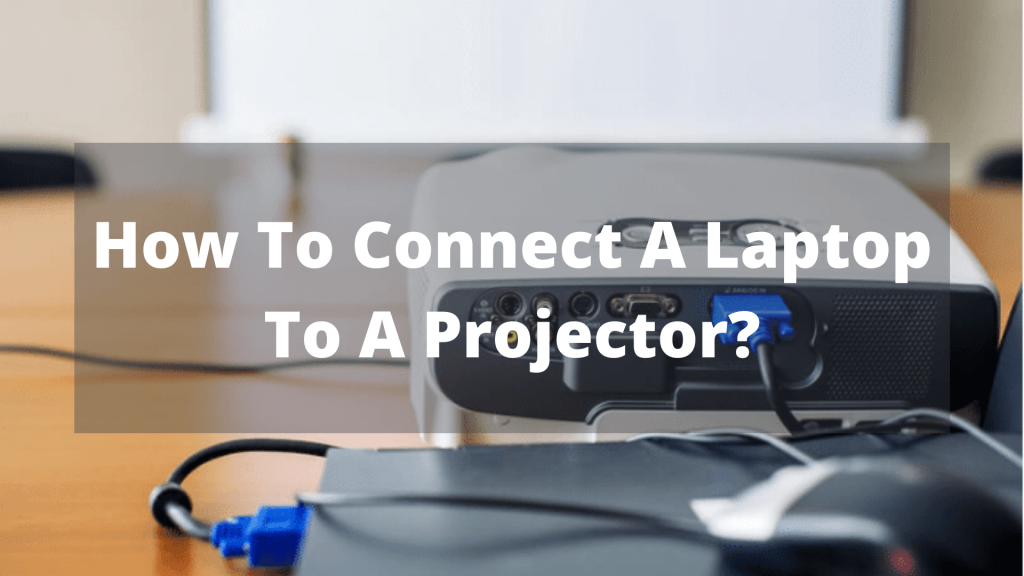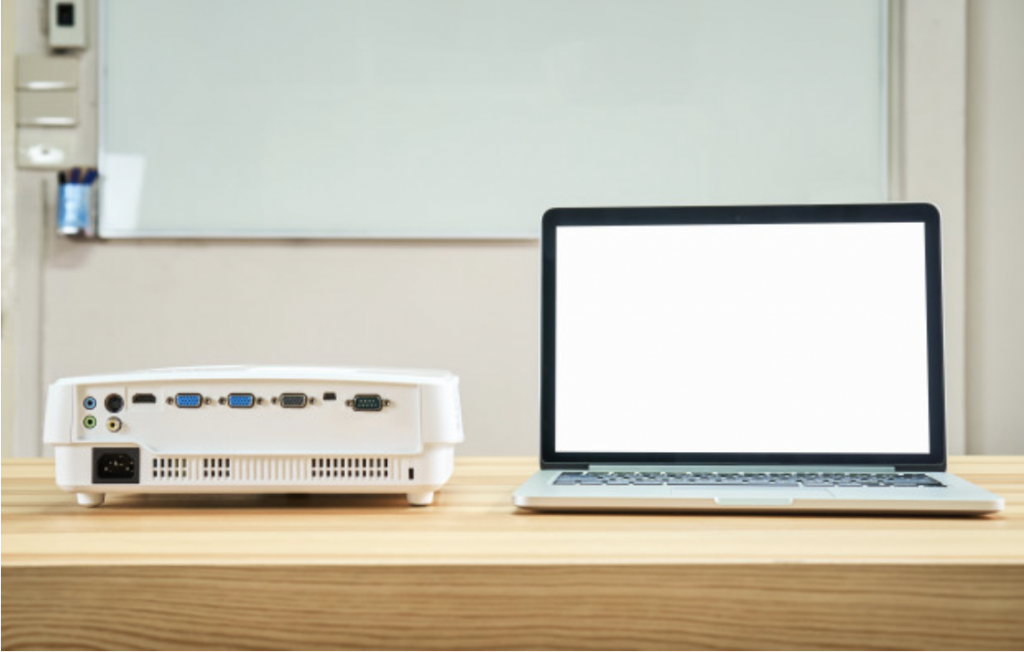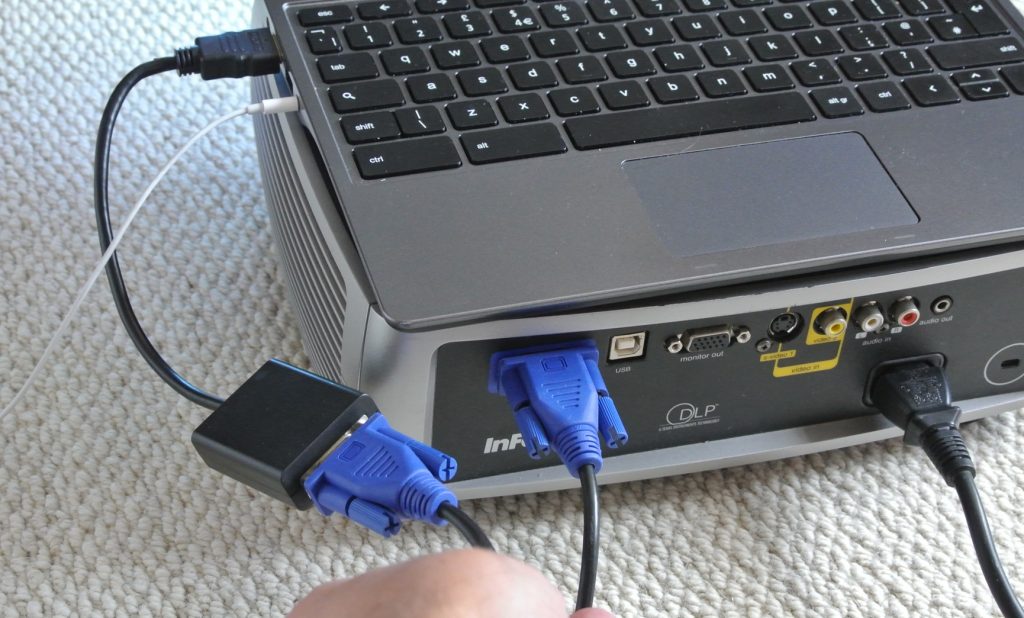How To Connect A Laptop To A Projector? In %currentdate%
Laptops are easily connectable to projectors with the right cables. The most common cable to use is a VGA cable. Many laptops have a VGA port built-in, so the cable is needed to connect it to the projector. You will need to use an adapter if your laptop does not have a VGA port.
The next step is connecting the cable’s other end to the projector. Once the cable is plugged in, you can project your laptop screen onto the projector screen.

How to connect a laptop to a projector?
Laptops can be connected to projectors in a few ways, the most common being through an HDMI cable. To connect a laptop to a projector using an HDMI cable, plug the cable into the laptop and the projector (using an adapter if necessary), then turn on the projector and open the lens.
Once the projector is turned on, open the display settings on your laptop and adjust as necessary. You can use a mirror display to project your desktop onto the projector or extend the display to use the projector as a second monitor.
Do You Need an Adapter to Connect a Laptop to a Projector?
There are a few things to consider when determining whether or not you need an adapter to connect a laptop to a projector.
- First, take a look at the ports on your laptop and projector. A full-sized HDMI port on your laptop and a full-sized HDMI port on your projector mean you will not need an adapter. However, if your laptop has a mini HDMI port or your projector has a micro HDMI port, you will need an adapter to make the connection.
- Another thing to consider is the resolution that you want to use. If you want to use a high resolution, you will need to ensure that your HDMI cable supports that resolution. Without it, you won’t get the maximum benefit from HDMI.
How To Connect Projector To Laptop Without VGA Port?

You need to know a few things to connect your projector to your laptop without a VGA port. First, you will need to acquire an HDMI to VGA adapter.
Once you have this adapter, you will need to connect the HDMI end of the adapter to the HDMI port on your laptop.
Next, you will need to connect the VGA end of the adapter to the VGA port on your projector. Finally, you will need to turn on your projector and laptop and ensure that your laptop’s display settings are set to display on your projector.
How To Connect Laptop To Projector With HDMI?
To connect your laptop to a projector using an HDMI cable, you must first connect one end of the HDMI cable to the HDMI port on your laptop.
Once the cable is securely connected to the port, you will need to connect the other end to the projector. Once both ends of the cable are connected, you should be able to project whatever is on your laptop screen onto the larger surface the projector provides.
How do I connect my laptop to my projector with HDMI and USB?
You can connect your laptop to a projector in a few different ways. One of the most common ways is to use an HDMI cable. Other options include using a USB cable. To connect your laptop to a projector via HDMI, plug one end of the HDMI cable into your laptop and the other end into the projector.
You will need to ensure that your laptop is set to output to the HDMI port. You can usually do this by going into your laptop’s display settings. You will need to use a standard USB-A cable to connect your laptop to a projector via USB. Plug one end of the cable into your laptop and the other end into the projector’s USB port.
How do I connect my laptop to a projector with HDMI Windows 10?
To connect your laptop to a projector with HDMI Windows 10, you will need to connect the HDMI cable to your laptop’s HDMI port and connect the other end of the cable to the projector.
Ensure that both the laptop and projector are turned on and that the HDMI cable is firmly connected to both devices. You should then see the image from your laptop on the projector screen. If you are having difficulty, you may need to adjust your laptop or projector settings.
What cable do I need to connect the laptop to projector?

You will need an HDMI cable to connect a laptop to a projector. This is the easiest way to connect the two devices, as it will allow for a direct connection.
Connect one end of the HDMI cable to the laptop and the other end to the projector. You may need to adjust the settings on your laptop to display the image on the projector, but this can usually be done by selecting the right input source.
Can I use USB to connect to the projector?
Yes, You can connect your USB device or camera to the projector’s USB TypeA port and use it to project images and other content.
This is a great way to share pictures or videos with a group or give a presentation without using a separate computer. Keep in mind that not all projectors have this capability, so check before you try to connect.
Why is my projector not connecting to my laptop?
Several potential reasons your projector might not be connecting to your laptop. One possibility is that there is a problem with the cable connection between the two devices. Another possibility is an issue with the settings on either the projector or the laptop. If you are having trouble connecting your projector to your laptop, the first thing you should check is the cable connection.
Ensure the cable is firmly plugged into the projector and the laptop. It may need to be tightened if it is loose. The replacement may be necessary if the cable is damaged. If the cable connection is not the issue, the next thing to check is the settings on both the projector and the laptop.
Conclusion
Now you know how to connect a laptop to a projector, you’re ready to start using them for business meetings, presentations, and more.
You can rest assured that your laptop is properly connected and won’t trouble you. This guide has everything you need to get started, so get out there and use your projector to its full potential.







